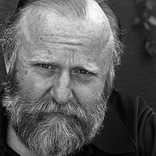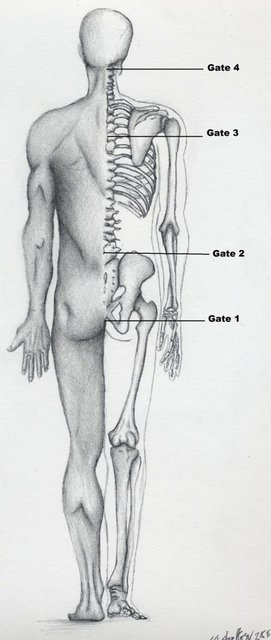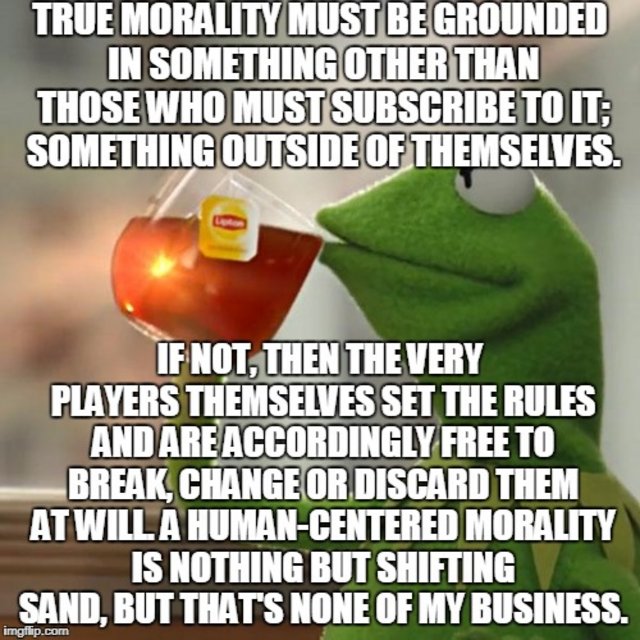-
Content count
4,406 -
Joined
-
Last visited
-
Days Won
20
Posts posted by Michael Sternbach
-
-
3 hours ago, Master Logray said:There were 2 main considerations on the battlefield in the old days - effectiveness and efficiency. For effectiveness, battles were usually fought not bare hand. It was mostly bow and arrow, then long spear or similar in the direct combat. Some may be armed with long knives. Weapons are usually the longer the better. Soldiers were somewhat armoured or with shields and required to fight in closely packed formations. Personal excellence in hand to hand combat did not offer too much advantages. While most Kung Fu were aimed to train people with high skills with bare hand or small weaponry, against very limited opponents without armour.
Many Kung Fu systems, including the Long Fist style I mentioned above, teach a variety of weapons well suited for the battle field. One such list (known as "The Eighteen Weapons of Kung Fu") includes:
Saber, spear, sword, Chinese halberd, battle-axe, deer-horn knives, hook sword, fork, whip, mace, hammer, talon, trident-halberd, staff, lance, cudgel, crutch and meteor hammer.
3 hours ago, Master Logray said:Organization, tactics and morale were more important than personal skill.
Another problem is efficiency. The empires didn't spend money or effort in training and maintaining highly skilled soldiers, taking them away from intensive farming popular in China. It is because Kung Fu training is long term and expensive. It was popular to say, poor scholars and rich fighters. Scholars can be trained or self developed with little resources. But only the rich could afford tutors or master in Kung Fu.
The China empires mostly depended on conscripts with minimal training, winning by numbers from their great population. It was why China often did not do well against surrounding horse riding countries with better skill soldiers in open grasslands.
I would say the different applications of Kung Fu in military and civil areas give rise to 2 different systems.
-
 1
1
-
-
7 hours ago, Master Logray said:The Chinese Kung Fu is mainly a personal defense system for civilians. It was not useful in the old days on the battlefields, and not useful nowadays with modern weaponry. Even the China army don't really train Chinese martial arts but absorb some elements only.
That depends on the Kung Fu style. For instance, Long Fist was created as a simplified form of monastic Shaolin specifically for soldiers.
QuoteWhether it is effective and longer lifespan is two different issues, though related.
@Earl Grey In the broader sense, all activities use up Yuan Chi. Martial arts could have some strenuous trainings or simulated combat that simply decrease lifespan. Persons trained in the art is more prone to involve in actual fighting, which needless to say, can cause injuries that could never recover.
-
 1
1
-
-
Totter lemon
-
2 hours ago, Cobie said:
Me, I followed the flow of awareness. The alternating was between red and blue.Try these then...
https://tasty.co/compilation/red-blue-pill-cocktails
I bet they will be conducive to the flow of consciousness.
😉
-
 1
1
-
-
9 minutes ago, old3bob said:“I must not fear. Fear is the mind-killer. Fear is the little-death that brings total obliteration. I will face my fear. I will permit it to pass over me and through me. And when it has gone past I will turn the inner eye to see its path. Where the fear has gone there will be nothing. Only I will remain.”
― Frank Herbert, Dunethe "I" that always was, always is and will always remain, the fearless and the eater of death
1. This is a course in miracles. ²It is a required course. ³Only the time you take it is voluntary. ⁴Free will does not mean that you can establish the curriculum. ⁵It means only that you can elect what you want to take at a given time. ⁶The course does not aim at teaching the meaning of love, for that is beyond what can be taught. ⁷It does aim, however, at removing the blocks to the awareness of love’s presence, which is your natural inheritance. ⁸The opposite of love is fear, but what is all-encompassing can have no opposite.
2. This course can therefore be summed up very simply in this way:
²Nothing real can be threatened.
³Nothing unreal exists.⁴Herein lies the peace of God.
-
 1
1
-
 1
1
-
-
15 hours ago, old3bob said:it is simple, mind is inherently dualistic and can never be anything other than that, although the non-dualistic needs mind to be perfectly still and clear for The Self to shine through into the manifest to whatever degree possible instead of It being veiled with veils.
The mind that is inherently dualistic and yet perfectly still and clear is the balanced mind.
-
 1
1
-
-
Well, if you wish to understand advanced concepts of physics, you need to learn the terminology too 🤷♂️
-
On 14.5.2022 at 2:55 AM, stirling said:It's just a way to notice that the sound of things isn't sourced at the ears. It's an exercise in opening up the way we think about the senses.
Hmm. On the one hand, our senses are designed to accurately locate and identify the source of their input.
On the other hand, they are prone to deception. I learned that lesson already in my early teenage years, when I was once anasthetized with laughing gas for a dental treatment. My already fairly developed rational mind told me that it was highly unlikely that the dentist was pulling faces in front of me, accompanied by carneval music - yet that's exactly what my senses were telling me.
On 14.5.2022 at 2:55 AM, stirling said:I imagine you perceive the world as full of separate beings and things. This is an illusion it is possible to see through.
Yes and know. I have had many experiences of melding with things and beings and actually honed that skill in order to gather information about my clients when working as an alternative medical therapist.
For that matter, trust me that, once you walked around with someone else's backache all day, you will appreciate having your boundaries up and running most of the time. 😅
On 14.5.2022 at 2:55 AM, stirling said:On this we agree. I'd be curious to hear about your experience of the veil lifting.
This happened unwittingly during a phase of intense meditation. During that time, once when I was out in the city, I felt some of my mental barier melt away, and the sensory input from my surroundings became so intense that it made me head for a nearby coffeeshop, so I could sit down and wait until the sense of overload decreased. It was then that I realized how much of the available sensory information my mind is usually filtering out - and for good reasons!
Much later I learned that this was actually a well known fact in neurophysiology.
On 14.5.2022 at 2:55 AM, stirling said:You can definitely play with the sense of proprioception, and I can imagine that it could be a way in. Working with panoramic seeing is one step - I think you mentioned that you are doing this.
Well, I am familiar with so called eagle vision from my practice of internal martial arts.
On 14.5.2022 at 2:55 AM, stirling said:Practicing hearing sound and locating those sounds in the exterior environment is another. Imagining that all of your senses do not necessarily correspond to a body location might be another.
Actually, they generally do (as long as I am not under the influence of laughing gas :D).
On 14.5.2022 at 2:55 AM, stirling said:Not at all! There are pointers to realities non-dual nature not only in most religions, but in science and your everyday experience happening all the time. I use the word remediation on purpose. We spend a lot of our time reinforcing our dualistic way of seeing. Dropping our story about how things are and just being present, as well as working to accept reality in this moment as it is are fantastic practices that do not require any story about a tradition. It's good to hold the story we build, including the one about our practices or religion, lightly, IMHO.
While I am writing all this, more and more, I am wondering if you aren't actually barking up the wrong tree.
 In a sense, it seems like my lesson was to learn dualism rather than non-dualism.
In a sense, it seems like my lesson was to learn dualism rather than non-dualism.
I remember reading that non-dualism is an infant's original state of perception. I assume that, with some, it stays more than with others.
On 14.5.2022 at 2:55 AM, stirling said:I'm glad we have some common ground.

Any good "non-dualist" (whatever that is) or Buddhist will press you to meditate. Honestly, that's enough. The philosophical arguments don't really get anyone anywhere. What you need to know is experiential, and you can do that without arguing if you are curious.
A spiritual experience then?
Indeed, my sudden awareness of the "thinking" of the Sun is best termed a spiritual or cosmic experience. And I would say it was also a non-dualistic experience, as my mind kind of melded with the Sun momentarily. This was accompanied by a lucid and awe inspiring sense that the Sun was as much aware of me as I was aware of him - just like he is aware of every little thing that exists in the solar system. It could even be described as an act of communication - only, to my regret, I couldn't understand the 'words' the Sun was uttering (they went way over my head, so to speak :D) - all I captured was their general intent.
It stands to reason that this kind of mystical experience formed the background for the ancient belief that "the Sun sees it all" - for instance, when Demeter was desperately trying to locate Persephone (which had been abducted by Hades), she asked the all-seeing Sun to enlighten her on her daughter's whereabouts.
On 14.5.2022 at 2:55 AM, stirling said:Either way, I would say that science is perfectly capable of inducing spiritual and religious experiences in people - and does.
Sure, if you have been following my posts for any length of time, you will be aware that I am a representative of the scientific approach to spirituality - or the merging of science with mysticism.
On 14.5.2022 at 2:55 AM, stirling said:Mine too - only one of them is very obviously an illusion. I could trot out the common arguments for how the boundary of things is obviously artificial, but I'm guessing you've heard of that before. Just in case:
https://lafavephilosophy.x10host.com/The_Questions_of_King_Milinda.htm
Commenting on your allegorical story:
Milinda: “Or perhaps the nails, teeth, skin, muscles, sinews, bones, marrow, kidneys, heart, liver, serous membranes, spleen, lungs, intestines, mesentery, stomach, excrement, the bile, phlegm, pus, blood, grease, fat, tears, sweat, spittle, snot, fluid of the joints, urine, or the brain in the skull – are they this ‘Nagasena’?”
Nagasena: “No, great king!”
Milinda: “Or is form this ‘Nagasena,’ or feeling, or perceptions, or impulses, or consciousness?”
Nagasena: “No, great king!”
I would say that the sum total of all that constitutes Nagasena is indeed Nagasena, while his identity also lies encoded at the core of his every cell.
The conclusion that, since there is a certain fluidity to what constitutes the whole of Nagasena at any given time, there would be no Nagasena in the first place, is a non-sequitur IMO.
On 14.5.2022 at 2:55 AM, stirling said:I have great respect for that! Are the insights you might have something you can experience in this moment? This, IMHO, is one of the most important questions.
And not a very easy one to answer, I am afraid.
I would say that some of my insights, and their associated state of mind, respectively, are tantamount to a permanent awareness. Others can be induced at will. Others again were experiences that came out of the blue and lasted for a certain amount of time.
On 14.5.2022 at 2:55 AM, stirling said:Thank you for your post, Mr. Sternbach.

My pleasure, Stirling. And, BTW, just call me Michael.

-
 1
1
-
-
32 minutes ago, awaken said:It is the exact same system as the seven chakras of the central chakra
Only in the misunderstanding of the transfer method
will produce cognitive conclusions that are different from the chakras
Hi Awaken,
I doubt that the TCM system is essentially different from what is used in Neidan, since both are dealing with the guidance of qi.
However, your statement I quoted above is interesting. Could you please explain in detail what the seven equivalents to the chakras in Dan Dao are?
I understand that these things come down to practice and personal experience, after all. But theoretical discussion of the underlying concepts has its place and is useful as well.
Thanks in advance.
-
The chakras and the dantian are not the same thing, but they are closely connected to each other.
A direct equivalent to the chakras can be found in the "gates of the body" of qigong and TCM, however. These are major Xuéwèi (穴位).
https://sheltonqigong.com/seven-gates-of-the-body-according-to-chinese-medicine/
The Indian and the Chinese system may not seem like direct equivalents at first, but in fact they are. Even the Indian system recognizes many more chakras than just the seven major ones. The only real difference is in regards to which energy centers are considered to be the most important ones.
-
On 23.5.2022 at 12:08 PM, Cobie said:
Cinnabar was one of the lethal remedies the preceding ‘external elixer’ was poisoning people with.That could hardly have been the case. Unlike many other mercury compounds, cinnabar is neither water-soluble nor particularly unstable, therefore it's relatively harmless.
This is not to say that external alchemy (including its Indian and Western brands) never uses potentially hazardous substances - however, proper alchemical processing renders them non-toxic and beneficial for health.
Of course, tragic accidents may occur when those same substances are handled by ignorant and/or inexperienced practitioners.
Quote
The name then transferred to the next efforts to produce an ‘internal elixer’.Dan tien = 丹田 dan1 tian2
‘dan’ means ‘pellet’ in this context and stood in general for a medicine, ‘elixer’.
‘tian’ means ‘field’, a metaphor for an area that work is done.
Cinnabar is a compound of mercury and sulfur, which are considered two basic constituents of matter in Western alchemy. Only that in the latter context, generally reference is made not to physical mercury and physical sulfur, but to their subtle equivalents (of sorts).
As Western alchemy has much in common with Chinese alchemy, I would assume that Neidan practitioners (borrowing their terminology from Waidan) simply employed these terms to identify corresponding aspects of human subtle anatomy.
-
-
-
13 hours ago, old3bob said:ok, up to a point that is part of the process...I'd say the other part is not diluting 1 drop with a thousand gallons and then claiming the thousand gallons are as pure as the now diluted one drop.
That sounds a bit like the making of a homeopathic remedy!

Actually, the analogy is not a bad one... Taking the essence of a system, not the form - and potentizing it.
For a form is subject to change and adaptation, while the essence it contains may always stay the same.
-
 1
1
-
-
10 hours ago, old3bob said:I was more or less a correlation junkie myself for a long time but have mostly given up on the "new age" like conflating habit...which mostly means well but also gets off track and goes around and around in trying to fit a wide range of concepts and meanings into a greater I got it all figured out concept and meaning.
There are those of us (including yours truly) who are of the scientific mind set. We do like to identify underlying patterns and try to see the bigger picture in all we study... It is our very way.
Is it a "new age" kind of thing? Depends on what you mean by that. I do believe that, as a species, we are heading towards a blending of science, philosophy, and religion. In fact, this will be crucial to our survival and spiritual evolution.
However, the syncretistic approach as such is not really something new. Pretty much every religion or metaphysical doctrine in existence today is the result of a revision and amalgamation of previous systems.
Such is the nature of human creativity. 🙂
-
5 hours ago, old3bob said:Come on, really? The only way to God and Heaven is through Jesus Christ per traditional Christianity, and that is not alluded to or found anywhere in far more tolerant Hinduism. So the only match ups that can be made are with esoteric or deep mystical correlations and even those have limits.
This is actually an excellent example. From the esoteric perspective, Christ stands for the Inner Self, which I think every religion has some concept of - whether they call it Atman, Buddha Nature, Shen, Fravashi, Aumakua, and so on.
Moreover, most religions go back to a historically more or less identifiable avatar who had a realization of this Inner Self and gave it tangible expression in the mundane world. When Jesus said: "I and the Father are One", no doubt it was that kind of realization he was trying to put in words.
Alas, most of his listeners took his words - ignorant of their esoteric meaning - as a monopolistic claim, inducing either devout reverence, or contempt for his apparent blasphemy.
What do you think Jesus meant when he said: "Very truly I tell you, whoever believes in me will do the works I have been doing, and they will do even greater things than these ... "
You are quite right, Hinduism is more tolerant than many other religions - because it is more attuned to mystical experience even in its popular form. What sense could it make to object to people that are subject to the same universal principles, just employing a different terminology and following different rituals?
And the same can be said of some pre-Christian religions of more Western origin as well - for instance, the ancient Greeks readily identified their deities with those of the Egyptians, and vice versa. They understood that they were both talking about the same spiritual forces or entities - only using (to one degree or another) different symbols to refer to them.
QuoteParamahansa Yogananda went a long ways with such mystical correlations in his Autobiography of Yogi, but even those have limits and are taking somewhat dubious liberties imo.
-
On 21.5.2022 at 11:55 PM, Nungali said:Pollen and tree ring analysis indicates the Chang Tang plateau in Northern Tibet had a far more liveable environment than it has today - one that could support a primordial civilization - until the climate become colder and drier starting around 1500 BCE, a climate change that caused the population to migrate out of the northern plateau.
The world was a very different place back then ;
As it happens, new Denisovan fossile remains have been found even further down the map just a few days ago, in Laos.
http://www.sci-news.com/archaeology/laos-denisovan-10814.html
Of course, we already knew that the Denisovans must have spread all over Asia in time immemorial. Remarkably, the people with the highest percentage of Denisovan genes today are from Oceania.
https://www.science.org/doi/10.1126/science.aad9416
-
2 hours ago, forestofemptiness said:I agree with Michael. The truth is the truth, it is reflected through different cultural lenses. No doubt some people reflect the truth more clearly, but it must be based on common ground. How can it be otherwise?
Right on.
The only alternative would be to assume that some religions are right, whereas others are wrong on an essential level. Only once enough humans have matured to realize that all systems offer genuine outlooks at the One metaphysical reality - beyond cultural differences - will the insane war about true and false religions stop.
The latter being based on a view that regards religions as something like different football teams bound to compete with one another in order to determine the strongest (read: the one which rightfully holds the claim to truth).
-
 2
2
-
-
50 minutes ago, old3bob said:traditional Christianity and traditional Hinduism will never match up or can be conflated. This is as plain as day going by their radically different scriptures and main tenants! But if one wants to get esoteric and mystically correlate stuff then there are some match ups but even that entails a lot of stretching with liberties taken. (imo)
I beg to differ in this regard.
All major religions convey the same information on the metaphysical level.
Except that they tend to vary when it comes to emphasis. Truths are complementary, and what is left out in one system may play a more central part in another.
-
-
3 hours ago, Nungali said:They all a mash ... even going far back .
Buddhism came to Tibet to Influence Bon to make Tibetan Buddhism, but way before that, a Buddha , before there was Buddhism, went to Tibet to teach and make native Bon more 'Buddhist'. And he probably got those traditions from Bo - Siberian shamanism , which had certain very advanced spiritual teachings and practices , which travelled down into Central Asia where the 'Masdayasni ' religion was established , fell to 'bad ways' and had to be reformed by Zoroaster into Zoroastrianism , which bought back in the good principles ( which lasted within it until the fall of the Persian Empire ) OR got a bit different cultural version and turned into Vedanta and crossed down into NW India .... eventually manifesting Buddhism, that went back up to Tibet .

Then there are the Siberian 'Good and Bad' Bon - Black or White Tengri ( the white where the ones spreading these teachings , the black, sorcerers doing evil works ) , possibly the seed source of the Zoroastrian concentration of good and bad powers of spirits and 'the mind' ( principles and practices on how to develop and maintain 'good mind' ) . Ahura and Div / Daeva in Avestas , Asuru and Deva in Vedas.
An ancient link between Tibet and Siberia is evident from the inherited Denisovan gene that enables contemporary Tibetans to live comfortably at high altitudes despite thin air.
https://www.science.org/content/article/tibetans-inherited-high-altitude-gene-ancient-human
The Denisovans are an enigmatic archaic human species whose traces have first been found in Denisova Cave in the Altai mountains of Siberia.
But the most complete remains so far have been discovered high on the Tibetan Plateau.
-
 3
3
-
 1
1
-
-
Going off on a tangent, I always found 'Buddislam' - a fictitious creed in Frank Herbert's Dune universe -, weirdly intriguing. Probably because it was created through the merger of two (apparently) so divergent religions as Zen Buddhism and Islam - at a time thousands of years in our future, of course.
-
 1
1
-
-
"Every misfortune and crime, whatever kind it may be, usually happens out of a lack of knowledge and out of ignorance, but it serves a higher purpose as a link in the chain of fate."
Elsbeth Ebertin (1880-1944), German astrologer
-









simplify
in Daoist Discussion
Posted
Shambala